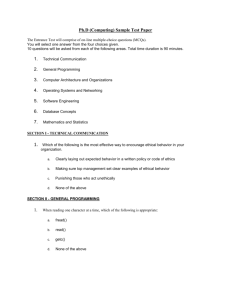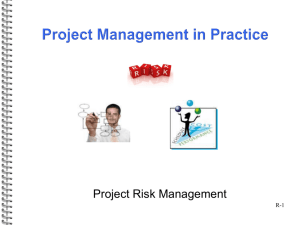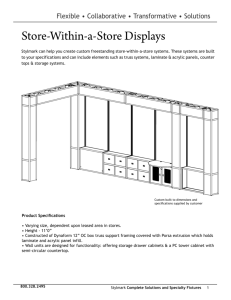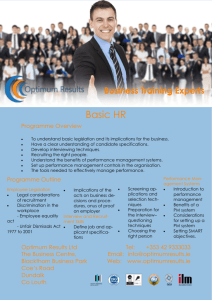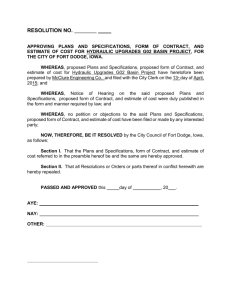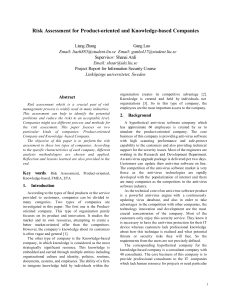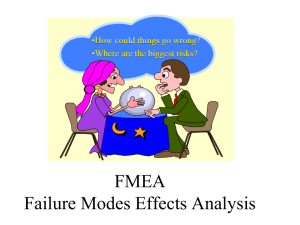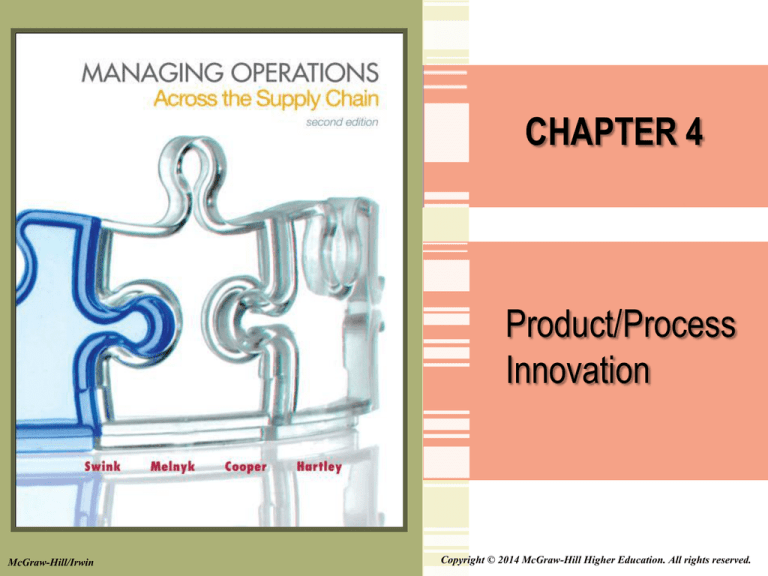
CHAPTER 4
Product/Process
Innovation
McGraw-Hill/Irwin
Copyright © 2014 McGraw-Hill Higher Education. All rights reserved.
Learning Objectives
LO4-1 Explain importance of innovation to firm
performance
LO4-2 Contrast innovation strategies and projects
LO4-3 Describe new product/process design and
development objectives and project phases
LO4-4 Explain importance of cross-functional
integration
LO4-5 Describe and use tools for integrating
customer and SC considerations into
projects
4–2
Design and Development Definitions
• New Product Design and Development:
transform market opportunities or new
technologies into product design specifications
• New Process Design and Development:
transform product specifications or technology
into a new or revised production strategy
LO4-1
4–3
Product Life Cycle Definitions
• Launch: introduction into the market and may
require SC process innovation
• Growth: increasing demand, flexible SC, more
data from customers, increasing standardization
• Maturity: demand and product stabilization,
increasing importance of cost, process innovation
to increase SC efficiency
• Decline: changing technology or customer needs,
declining demand, potential phase in of a
replacement product
LO4-1
4–4
Innovation Affects Performance
Customers share needs and
desires
Finance evaluates potential
opportunities
Marketing communicates
customer needs and desires,
and information on competitive
priorities into the organization
Engineering turns customer
needs and desires into product
and process specifications
Operations across the SC
determine how to best source,
produce and deliver based on
operational capabilities
LO4-2
4–5
New Product/Process Launch and
Learning
• Management of a progression of
projects
• Capture lessons learned post launch
• Learning applied to next project
• Continuous chain of projects adds to
capabilities
LO4-2
4–6
Product/Process Design and
Development: Stages
LO4-3
4–7
Product/Process Design and
Development: Managing Stages
• The Stage-Gate process: resources allocated
on stage-by-stage completion
• Concurrent engineering: simultaneous (not
sequential)
• Design for the customer: use of multiple
customer focused tools
• Design for supply chain operations: use of
multiple supply chain or product techniques
LO4-3
4–8
Concurrent Engineering
LO4-4
Figure 4-4
4–9
Design for the Customer
• Voice of the Customer (VOC): gather input on
customer’s needs and wants
• Quality Function Deployment (QFD): convert
customer’s needs and wants into specifications
• Failure Modes and Effects Analysis (FMEA):
identification and correction of potential
problems
LO4-5
• Value Engineering/Value Analysis:
improvement of benefits and costs through
examination of functionality
4–10
Failure Modes and Effects Analysis
(FMEA)
1. Determine unit of analysis
2. Identify potential failures and sources
3. Prioritize failure modes
Risk Priority Number (RPN) =
Occurrence rating x Severity Rating x Undetectability Rating
4. Create plans
5. Implement plans, measure impact, adjust
analysis
Name
LO4-5
Function
Failure
Mode
Effect
Cause
Severity
(S)
Occurrence
(O)
Undetectability
(U)
RPN
SxOxU
Recommendation
4–11
Design for Supply Chain Operations
• Design for Manufacture: improvement of product
“producibility”
• Standardization: reuse parts for existing designs
• Modularity: using combinations of standardized
parts
• Design for Logistics: minimizing packaging,
handling and shipping costs
• Design for the Environment: minimize negative
environmental impacts, across product life cycle
LO4-5
4–12
Design for Manufacture: Processes
• Design for Assembly: minimizing number of
components and easing assembly processes
• Design for Product Serviceability: easing
disassembly and component reuse
• Design for Six Sigma: improving process
consistency
• Robust Design: improving the design’s
tolerance for variability
LO4-5
4–13
Enabling Technologies
• automating systems
Computeraided Design
for drawings and
(CAD):
specifications
LO4-5
Computeraided
Engineering
(CAE):
• systems that create 3D models, reducing
prototype need
Product Life
Cycle
Management
(PLM):
• capturing and sharing
product definition data
across the life cycle
4–14
Product/Process Innovation
Summary
1. Innovative firms gain competitive advantage.
2. Innovation in the SC involves customers,
suppliers and other partners, resulting in faster
and more efficient development.
3. Innovation projects have multiple stages.
4. Innovation project stages can proceed
sequentially or concurrently.
5. Innovation projects require the integration of
many interrelated product/process design
issues
4–15


